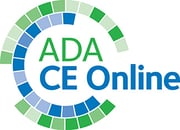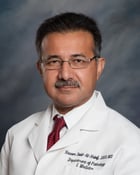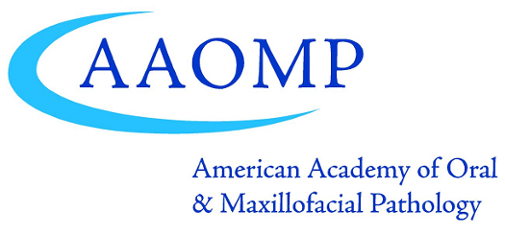Systemic therapy for patients with oral squamous cell carcinoma
Surgery is the primary treatment modality for patients with OSCC. To reduce the incidence of metastatic recurrence in many types of cancer, physicians often administer adjuvant chemotherapy after surgery. However, with respect to oral cancer, no benefit has been shown; therefore, adjuvant chemotherapy should only be used in the context of a clinical trial, the authors wrote.
Several studies have examined the use of concurrent chemotherapy and radiation as adjuvant oral cancer treatment and reported its superiority to irradiation alone in patients with an increased risk of experiencing recurrence. Specifically, adjuvant chemoradiation improves survival in patients with lymph node metastasis that exhibits extracapsular extension and in those with positive resection margins. High-dose cisplatin should be used unless a medical contraindication exists.
Several trials have been conducted on the use of primary chemoradiation in the treatment of locally advanced oral and other head and neck cancers as a means of organ preservation and primary therapy. For example, according to the 2009 Meta-Analysis of Chemotherapy in Head and Neck Cancer, chemotherapy in addition to radiation therapy improved survival, with an absolute benefit of 6.5% in the 5-year survival rate. However, the study findings showed no benefits in patients older than 70 years.
On the basis of the evidence, the authors concluded that primary chemoradiation has a role in the management of unresectable OSCC. In comparison with irradiation alone, it improves survival and reduces the risk of recurrence. Treatment with high-dose cisplatin is preferred over lower-dose weekly treatment, but in those with medical contraindications, a lower-dose weekly regimen is preferred.
Initial chemotherapy before definitive local treatment is referred to as induction chemotherapy. According to the authors, this treatment usually involves a combination of drugs (such as docetaxel, cisplatin, and 5-fluoracil). On the basis of several study findings, they concluded that compared with chemoradiation alone, the benefit of a combination of docetaxel, cisplatin, and 5-fluoracil followed by chemoradiation remains unclear. Moreover, this treatment is associated with a significant incidence of hematologic and nonhematologic toxicity. In light of mixed study findings, more research is needed to clarify the role of induction chemotherapy in patients with locally advanced oral cancers, the authors wrote.
The authors also discussed treatment of metastatic OSCC, an uncommon occurrence. They pointed out that treatment is palliative, and the median survival of patients with metastatic disease is about 6 through 12 months. In cases of disease progression after front-line chemotherapy, multiple options exist including the use of cytotoxic chemotherapy, programmed cell death–1 inhibitors, cetuximab (a monoclonal antibody directed against the epidermal growth factor receptor), and small molecule tyrosine kinase inhibitors. Programmed cell death–1 inhibitors have been shown to improve survival in this treatment setting. Two such agents are nivolumab and pembrolizumab, which were shown to improve survival in patients with metastatic head and neck cancers after treatment with platinum-based chemotherapy.
Read the original article here or contact the ADA Library & Archives for assistance.

Oral manifestations of celiac disease and the potential impact of a gluten-free diet
Celiac disease (CD) is a chronic autoimmune disorder triggered by gluten intolerance in genetically susceptible patients. Some common oral manifestations of the disease are recurrent aphthous ulcers, defects in tooth enamel, and burning tongue. A gluten-free diet (GFD) seems to improve patients’ oral health status. Therefore, the aim of this systematic review was to investigate oral manifestations of CD and the potential impact of a GFD on patients’ oral health. The study was published online October 24, 2018, in Gastroenterology Research and Practice.
Researchers searched the PubMed database for English-language studies published from 2008 through 2018 on oral health and GFD. Their initial search of the literature revealed 67 articles. After excluding studies that did not meet the inclusion and exclusion criteria, they identified 9 articles with a low risk of bias for inclusion in the systematic review. Owing to heterogeneity between the studies, the researchers could not perform a meta-analysis.
Inclusion criteria were clinical human studies pertaining to CD, GFD, and oral health. The researchers excluded in vivo and in vitro studies; trials of medications, new treatment methodologies, or both; animal studies; studies of cancer in locations other than those mentioned; and studies that were not relevant to the systematic review’s methodology.
The results of the systematic review indicated an association between a GFD and the oral health status of patients with CD. However, the quality of the data was poor, and findings pertaining to a GFD and oral health status were not significant. Thus, only recommendations rather than guidelines were identified in the included studies.
In 1 study of 740 patients with CD and 270 control participants, researchers found associations between CD and xerostomia (according to the Xerostomia Inventory) and CD and other oral health problems (according to the Oral Health Impact Profile-14). The authors urged gastroenterologists and dentists to collaborate to improve detection of undiagnosed disease.
Another study explored the oral health status of children with CD in relation to a GFD. The study demonstrated that patients with newly diagnosed disease had more dental plaque and caries than children in the control groups (P < .05). Moreover, children receiving a GFD had less dental plaque and better oral hygiene.
Researchers in a third study evaluated children with CD who did or did not comply with a GFD and children without CD. The main differences reported among children with CD who did or did not comply with a GFD and those in the control group were the presence of polymorphonuclear neutrophils in the oral mucosa of patients with CD and protein salivary patterns. The study authors concluded that these findings could be considered markers for CD, along with other signs and symptoms.
A fourth study investigated the relationship between developmental defects of enamel in primary, mixed, and permanent dentitions and CD. The researchers observed a statistically significant association between developmental defects of enamel in primary teeth and CD.
Based on the systematic review findings, the authors concluded that a GFD seems to be related to an improved oral health status of patients with CD.
Read the original article here or contact the ADA Library & Archives for assistance.

Assessing the effects of electronic cigarettes on head and neck cancers
During the past several years, the use of electronic cigarettes (also known as an electronic nicotine delivery system) has increased in popularity. Although potentially harmful chemicals have been identified in e-cigarette liquids and aerosols, reports in the literature are conflicting regarding their long-term effects on health. The aim of this qualitative systematic review was to assess the effects of e-cigarettes on the pathogenesis of head and neck (HN) cancers. The study was published online May 30 in Clinical Otolaryngology.
Using Medical Subject Headings terms and other relevant key words, the authors conducted an electronic search of the following databases: PubMed/MEDLINE, Cochrane, Cumulative Index to Nursing and Allied Health Literature Plus, Trip medical database, and Web of Science. Two examiners independently reviewed all abstracts and complete articles of included studies, as well as performed data extraction and quality assessment. They determined the level of evidence according to the guidelines of the Oxford Centre for Evidence-based Medicine.
The examiners identified 359 articles in the initial search of the literature. After excluding studies that did not meet the inclusion and exclusion criteria, they identified 18 articles for inclusion in the final qualitative analysis.
Of the 18 articles, 13 were laboratory-based investigations and 5 were clinical studies. Nine of the laboratory-based investigations used cells derived entirely from the oral cavity; 1 study used oropharyngeal cells and cells harvested from a primary laryngeal tumor; 1 used cultures from the middle ear; and 1 used cultures from the oropharynx. Of the 5 clinical studies, 2 were cohort investigations, 2 were case-control studies, and 1 was a case series.
Eight of the laboratory investigations demonstrated the cytotoxicity of e-cigarettes in cellular experiments, with varying extent of DNA damage and oxidative stress induced by toxic components. One study that exposed cells to e-cigarette aerosol or tobacco smoke extracts reported a nicotine-independent but dose-dependent increase in DNA damage caused by e-cigarette aerosols. However, the levels of damage were lower than those induced by tobacco smoke extracts. Another group of researchers investigated the effects of e-cigarette aerosols on a panel of cell lines; they observed an increase in DNA damage, arrest in gap 1 and gap 2 cell cycle phases, increased apoptosis, necrosis, and cell death.
In 1 of the 5 clinical studies, researchers analyzed saliva from e-cigarette smokers, tobacco smokers, and nonsmokers. They reported the endogenous formation of the oral and esophageal carcinogen N’-nitrosonornicotine in e-cigarette smokers.
The authors of the systematic review noted that flavored e-liquids, particularly menthol, seem to be more harmful than unflavored e-liquids. Possible toxicants include tobacco-specific nitrosamines, aldehydes, trace metals, volatile organic compounds, phenolic compounds, polycyclic aromatic hydrocarbons, and tobacco alkaloids.
The results of this qualitative systematic review show some evidence of a potentially carcinogenic role of e-cigarettes in the pathogenesis of HN cancers. However, overall, the authors emphasized that the quality of studies exploring the association between e-cigarette use and HN cancer was poor. Most investigators consider the results of basic laboratory experiments involving established cell lines or primary cells to be reflective of the lowest level of evidence. Other studies were poor-quality cohort trials with small sample sizes and limited exposure time, as well as individual case reports and case series.
To examine the potential association between e-cigarette use and HN cancers, future research should include more well-designed, prospective cohort studies conducted over longer periods with larger sample sizes, the authors concluded.
Read the original article here or contact the ADA Library & Archives for assistance.

Oral care therapies and the prevention and treatment of oral mucositis in children
Patients in the pediatric intensive care unit (PICU) are at high risk of developing oral mucositis (OM). However, no agent has been shown to be completely effective in treating OM. The objective of this study, published in the March-April issue of Journal of Pediatric Nursing, was to evaluate the effects of 3 oral care therapies on the prevention and treatment of OM in children in the PICU.
The randomized controlled trial was conducted in the Duzce University Health Practice and Research Center in Duzce, Turkey, from September 2016 through November 2017. The study sample included 150 children (75 with and 75 without OM) 2 years or older who were receiving treatment in the PICU. Participants’ median age was 7.25 years.
Researchers randomly divided the patients with OM into 3 groups of 25 each as follows: group 1 (chlorhexidine), group 2 (vitamin E), and group 3 (honey). Similarly, they randomly divided patients without OM into 3 groups of 25 each: group 4 (chlorhexidine), group 5 (vitamin E), and group 6 (honey).
The researchers used the World Health Organization Oral Mucositis Index to classify patients’ OM during the study. According to this system, anatomic changes in the oral mucosa and the severity of OM are scored from 0 through 4 as follows:
- 0 = no mucositis and normal oral mucosa;
- 1= mild OM, presence of pain, and slightly erythematous areas in the mucosa, gingiva, tongue, or palate;
- 2 = moderate OM, presence of erythema, ulcers smaller than 2 millimeters, and ability to perform normal feeding;
- 3 = severe OM, presence of ulcers and deep and painful erythema, only liquids supported;
- 4 = life-threatening OM, presence of ulcers, erythema, severe pain, and bleeding rendering feeding impossible and necessitating parenteral feeding.
One physician, who was unaware of the details of the study groups, monitored the condition of the children’s mouths every day.
Two researchers applied the assigned oral care therapy to patients every 12 hours. For children randomized to receive honey (groups 3 and 6), the researchers applied the honey to the entire oral mucosa (right and left buccal mucosa, hard and soft palate, bottom and top of tongue), teeth, and lips. They calculated the daily amount of honey to be applied as 1 to 1.5 grams per kilogram of the child’s weight.
For those randomized to receive vitamin E (groups 2 and 5), the researchers broke open a soft capsule containing 100 international units of natural vitamin E and applied it to the entire oral mucosa, as well as to the teeth and lips every 12 hours.
For those receiving chlorhexidine treatment (groups 1 and 4), the investigators applied a ready-to-use solution of chlorhexidine gluconate to the entire oral mucosa, teeth, and lips using a sponge stick.
The authors compared the mucositis index values of the groups on days 1, 3, 6, 9, 12, 15, 18, and 21. They found that children treated with vitamin E had significantly lower scores than children in the other groups (P < .05 for each). Moreover, children’s scores in the chlorhexidine groups were significantly higher than those in the other treatment groups (P < .05 for each). These findings apply to both patients with and without OM at study onset.
The results of this study showed that vitamin E was most effective at managing OM in patients in the PICU, followed by honey. Chlorhexidine was the least effective modality for managing OM in children in this study, the authors concluded.
Read the original article here or contact the ADA Library & Archives for assistance.
AAOMP course planned for the ADA FDI World Dental Congress in San Francisco
Join the American Academy of Oral & Maxillofacial Pathology for the continuing education course, The Differential Diagnosis of Oral Ulcerative Lesions (5164), by Dr. Darren Cox, professor, University of the Pacific, Arthur A. Dugoni School of Dentistry. The course, created in partnership with the AAOMP, will be held Thursday, September 5, from 8:30-10:45 a.m.
Although many different oral ulcerative conditions have similar clinical appearances, etiologies may be traumatic, reactive, infectious, immunologic or neoplastic. Some ulcerative conditions are always preceded by a blister, while others are never associated with blisters. Location, relationship to systemic disease and the presence of an associated fever are all important in narrowing a differential diagnosis
Learning Objectives:
- Become more adept at developing a differential diagnosis based on clinical findings
- Become more adept at honing a differential diagnosis based on systemic correlations, medical/medication history and other patient demographics
- Understand appropriate treatments of common oral ulcerative condition
Register for the meeting and this course at https://www.world-dental-congress.org/registration.
Pathology CE at ADA FDI World Dental Congress
 Fulfill your CE requirements and stay informed of the latest pathology news and developments with over 350 CE courses being offered at ADA FDI 2019. The scientific program offers attendees a wide selection of specialty courses to choose from. Join us in San Francisco September 4-8 and consider registering for the following pathology courses:
Fulfill your CE requirements and stay informed of the latest pathology news and developments with over 350 CE courses being offered at ADA FDI 2019. The scientific program offers attendees a wide selection of specialty courses to choose from. Join us in San Francisco September 4-8 and consider registering for the following pathology courses:
- ADA Oral Cancer Screening Guidelines: Ask the Expert (#6504), CE Hours: 1
- The Maxillary Sinus in 3-D: What Dentists Need to Know about Health and Pathology (#6146), CE Hours: 1.5
- Following the Path of Oral Cancer Diagnosis (#5109), CE Hours: 2
View courses and register today at ADA.org/meeting.
Understand the etiology of your patients’ lesions, dental erosions to improve their health
 It’s not every day that a patient comes in with premalignant lesions or significant dental erosion. Recognize the signs and the causes, so you effectively treat the patient and improve their health in any instance. The ADA offers continuing courses that teach you how to conduct a comprehensive visual tactile exam and develop a differential diagnosis of common oral lesions and dental erosion:
It’s not every day that a patient comes in with premalignant lesions or significant dental erosion. Recognize the signs and the causes, so you effectively treat the patient and improve their health in any instance. The ADA offers continuing courses that teach you how to conduct a comprehensive visual tactile exam and develop a differential diagnosis of common oral lesions and dental erosion:
- Differential Diagnosis of Oral Lesions –John Alonge
- Oral Cancer Screening and Radiotherapy Morbidity Management
- Management and Prevention of Dental Erosion
Visit ADACEOnline.org to find out more information about these and other pathology courses.

The consulting editor for JADA+ Specialty Scan — Oral Pathology is Faizan Alawi, DDS, Associate Dean for Academic Affairs and Associate Professor of Pathology, School of Dental Medicine; Associate Professor of Dermatology, Perelman School of Medicine; Director, Penn Oral Pathology Services; University of Pennsylvania |

The associate consulting editor for JADA+ Specialty Scan — Oral Pathology is Nasser Said-Al-Naief, DDS, MS, Professor, Dept. of Integrated Biomedical and Diagnostic Sciences, Oregon Health and Sciences University, School of Dentistry and School of Medicine. |
|




